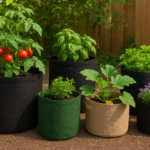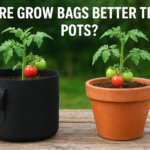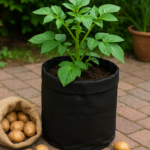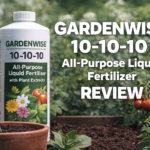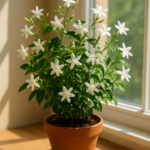Welcome to the “Green Thumb Guide: How to Grow Hydro Weed Plants Indoors.” Hydroponic cultivation offers an exciting and efficient way to grow high-quality weed in the comfort of your own home. By eliminating the need for soil and harnessing the power of nutrient-rich water solutions, indoor hydroponic setups provide precise control over growing conditions, resulting in faster growth rates and increased yields.
This comprehensive guide will walk you through the step-by-step process of setting up and maintaining a successful hydroponic weed garden. From selecting suitable strains and hydroponic systems to providing optimal lighting and nutrient management, we’ll cover everything you need to know to become a hydroponic gardening expert. Whether you’re a seasoned cultivator or a beginner with a green thumb, this guide will empower you to grow top-quality weed plants indoors confidently. Let’s dive in and unlock the secrets of successful hydroponic cultivation!
What is Hydro Weed Cultivation?

Hydroweed cultivation, also known as hydroponic weed cultivation, is a method of growing cannabis plants without the use of soil. Instead of traditional soil-based cultivation, hydroponic systems deliver nutrients directly to the plant’s roots through a nutrient-rich water solution. This approach allows for precise control over nutrient levels, pH balance, and environmental conditions, resulting in faster growth rates and higher yields than soil-based methods. Hydroponic systems can range from simple setups using containers and nutrient solutions to more complex systems with automated controls and advanced monitoring technology. By eliminating soil-borne pests and diseases and maximizing nutrient uptake, hydroponic weed cultivation allows cultivators to produce top-quality cannabis plants indoors year-round, regardless of external environmental factors.
Is hydroweed stronger?
Compared to weed grown using traditional soil-based methods, the strength of hydro weed can vary based on several factors. While hydroponic cultivation can potentially produce cannabis with higher THC levels and more potent effects, it’s not solely attributed to the hydroponic method itself.
Hydroponic systems offer precise control over nutrient delivery, environmental conditions, and growth factors, which can optimize plant growth and development. This controlled environment may result in cannabis plants with higher THC concentrations and potentially more potent effects.
However, cannabis’s potency depends on various factors beyond the cultivation method, including the specific strain grown, genetics, harvesting and curing techniques, and environmental conditions. Factors like nutrient balance, light intensity, and temperature control can influence the production of cannabinoids and terpenes, which contribute to the weed’s overall strength and potency.
Advantages of Growing Hydro Weed Indoors
Growing hydro weed indoors offers a multitude of advantages for cultivators looking to produce high-quality cannabis.
- Complete Environmental Control: Indoor hydroponic cultivation allows growers to precisely control environmental factors such as temperature, humidity, and lighting. This control enables them to create ideal growing conditions regardless of external weather conditions, resulting in consistent and optimal plant growth.
- Year-Round Cultivation: Unlike outdoor cultivation, indoor hydroponic systems enable growers to cultivate weed plants year-round, irrespective of seasonal changes. This ensures a continuous and reliable supply of cannabis, regardless of the time of year.
- Higher Yields: Hydroponic systems deliver nutrients directly to the plant’s roots, resulting in faster growth rates and increased yields than traditional soil-based methods. The controlled environment and optimized nutrient delivery of hydroponic setups maximize the plant’s growth potential, leading to larger harvests.
- Space Efficiency: Indoor hydroponic setups can be tailored to fit a variety of spaces, from small grow tents to dedicated grow rooms. This flexibility allows growers to maximize space efficiency and cultivate many plants in relatively small areas, making it ideal for urban environments or limited spaces.
- Reduced Risk of Pests and Diseases: By eliminating the use of soil, hydroponic cultivation minimizes the risk of soil-borne pests and diseases that can negatively impact plant health. This results in healthier plants and reduces the need for pesticides and other chemical interventions.
How to Set Up Your Indoor Hydro Weed Operation?
Setting up your indoor hydro weed operation is an exciting endeavour that requires careful planning and attention to detail. Whether you’re a novice grower or an experienced cultivator, creating the perfect environment for your cannabis plants is crucial for success.
Choosing the Right Space:
The first step is selecting the optimal location for your indoor hydroponic setup. Look for a space that offers ample room for your plants to grow and for you to manoeuvre comfortably. Consider factors such as access to electrical outlets, ventilation, and proximity to water sources. Ideally, choose a space that is easily accessible and can be secured to maintain privacy and security.
Installing Necessary Equipment:
Gather all the essential equipment needed for your indoor hydroponic operation. This includes growing lights, hydroponic trays or containers, nutrient reservoirs, air pumps, pH testing kits, and ventilation systems. Ensure all equipment is installed correctly and functioning before the setup.
Choosing the Hydroponic System:
Selecting the right hydroponic system is crucial for the success of your indoor weed cultivation. Consider factors such as your space limitations, budget, and level of expertise. Standard hydroponic systems used for growing weeds indoors include Deep Water Culture (DWC), Nutrient Film Technique (NFT), Ebb and Flow (Flood and Drain), Drip System, and Wick System. Choose a system that best suits your needs and preferences.
Creating the Growing Environment:
Once you’ve chosen your hydroponic system, it’s time to create the ideal growing environment for your cannabis plants. Ensure proper ventilation and air circulation to prevent heat buildup and mould growth. Control temperature and humidity levels within the optimal range for cannabis cultivation, typically between 70-85°F (21-29°C) and 40-60% humidity. Install grow lights that provide the right spectrum and light intensity for each plant growth stage.
Setting Up Nutrient Delivery:
Establish a nutrient delivery system to provide essential nutrients to your plants. Mix nutrient solutions according to manufacturer instructions and monitor pH levels regularly to ensure proper nutrient uptake. Set up a reliable watering schedule based on your plant’s needs and the requirements of your hydroponic system.
Selecting the Right Hydroponic System
Selecting the right hydroponic system is crucial for indoor hydroweed operation. Each hydroponic system has its advantages and considerations, so choosing one that aligns with your space, budget, and level of expertise is essential. Here are some standard hydroponic systems used for growing weeds indoors:
Deep Water Culture (DWC):
In DWC systems, plants are suspended in a nutrient solution, allowing their roots to grow directly into the water. This method provides excellent oxygenation to the origins and is relatively easy to set up and maintain. However, frequent monitoring of nutrient levels and pH is required.
Nutrient Film Technique (NFT):
NFT systems involve a continuous flow of nutrient solution over the roots, creating a thin film of nutrient-rich water. This method is highly efficient but requires careful monitoring to prevent nutrient imbalances. NFT systems are ideal for smaller spaces and can be easily customized to fit your needs.
Ebb and Flow (Flood and Drain):
Ebb and flow systems intermittently flood the growing medium with a nutrient solution before draining it away. This cycle provides ample oxygen to the roots and promotes healthy growth. Ebb and flow systems are versatile and suitable for various plants, including cannabis.
Drip System:
Drip systems deliver nutrient solutions directly to each plant’s base through a tubing and emitters network. This method allows for precise control over nutrient delivery but may require more frequent monitoring. Drip systems are suitable for more significant growth operations and can be automated for convenience.
Wick System:
Wick systems use capillary action to draw nutrient solution from a reservoir into the growing medium. While simple and low-maintenance, wick systems may be less suitable for larger plants or high-yield operations. They are ideal for beginners or growers with limited space and resources.
How to Choose the Best Strain for Hydroponic Growth?
Choosing the best strain for hydroponic growth is crucial in ensuring a successful indoor weed cultivation operation. With numerous strains available, each with unique characteristics, it’s essential to consider several factors to determine which strain will thrive in a hydroponic environment. Here’s a guide on how to choose the best strain for hydroponic growth:
Consider Growth Characteristics:
Look for well-suited indoor cultivation strains with growth characteristics that align with your hydroponic setup. Consider factors such as plant size, flowering time, and yield potential. Compact, Indica-dominant strains are often preferred for indoor hydroponic gardens due to their manageable size and shorter flowering periods.
Evaluate Environmental Preferences:
Different strains have varying environmental preferences, so choose a strain that can thrive in the conditions you can provide. Consider factors such as temperature, humidity, and light requirements. Look for strains adaptable to a wide range of environmental conditions or matching the specific conditions of your grow room.
Research Genetic Stability:
Opt for strains from reputable breeders known for producing stable genetics. The stable genetics ensure consistency in plant characteristics and growth patterns, making predicting and managing the cultivation process easier. Look for reviews and recommendations from experienced growers to identify reliable strains.
Assess THC and CBD Content:
Determine the cannabinoid profile you desire in your cannabis plants, whether it’s high THC for potent psychoactive effects or balanced THC/CBD ratios for medicinal purposes. Select strains with cannabinoid profiles that align with your preferences and intended use.
Consider Resistance to Pests and Diseases:
Look for strains that exhibit resistance to common pests and diseases, as this can help minimize the risk of infestations and crop loss. Resistant strains are often more robust and accessible to cultivate, making them ideal for hydroponic environments where pest management can be challenging.
Experiment and Adapt:
Feel free to experiment with different strains to find the ones that best suit your hydroponic setup and personal preferences. To inform future cultivation decisions, keep detailed records of each strain’s performance, including growth characteristics, yield, and potency.
Factors to Consider When Selecting a Strain
When selecting a strain for your hydroponic cannabis cultivation, it’s essential to consider several factors to ensure a successful and satisfying growing experience. Here are some key factors to consider when choosing a strain:
Growth Characteristics:
Consider the growth characteristics of the strain, including plant size, structure, and growth patterns. Some strains are compact and bushy, while others may grow tall and stretchy. Choose a strain that fits your available space and cultivation setup.
Flowering Time:
Different strains have varying flowering times, ranging from 6 to 12 weeks or longer. Consider the flowering time of the strain and how it aligns with your schedule and patience. Shorter flowering times may be preferable for growers seeking quicker harvests, while longer flowering times may result in higher yields or unique cannabinoid profiles.
Yield Potential:
Evaluate the strain’s yield potential, including its ability to produce large, dense buds. Some strains are known for their high yields, while others may grow smaller, more resinous buds. Consider your cultivation goals and desired yield when selecting a strain.
THC and CBD Content:
Determine the cannabinoid profile you prefer in your cannabis plants, whether it’s high THC for potent psychoactive effects or balanced THC/CBD ratios for medicinal purposes. Research the THC and CBD content of different strains and choose one that aligns with your preferences and intended use.
Aroma and Flavor:
Consider the aroma and flavour profile of the strain, as it can significantly enhance the overall experience of consuming cannabis. Some strains may have fruity, citrusy, or earthy aromas, while others may have more complex or unique flavour profiles. Choose a strain that appeals to your sensory preferences.
Effects:
Research the strain’s effects, including its psychoactive and therapeutic properties. Some strains may produce uplifting, energetic effects, while others may have more sedative or relaxing effects. Consider how the strain’s effects align with your desired experience and wellness goals.
Resistance to Pests and Diseases:
Look for strains that exhibit resistance to common pests and diseases. This can help minimize the risk of crop loss and simplify cultivation. Resistant strains are often easier to grow and maintain, making them ideal for novice growers or those with limited experience.
Genetic Stability:
Choose strains from reputable breeders known for producing stable genetics and consistent results. The stable genetics ensure uniformity in plant characteristics and growth patterns, making predicting and managing the cultivation process easier.
Understanding the Light Requirements of Weed Plants

Understanding the light requirements of weed plants is essential for successful indoor hydroponic cultivation. Light plays a crucial role in photosynthesis, the process by which plants convert light into chemical energy to fuel growth. Here’s a comprehensive guide to understanding the light requirements of weed plants:
Light Spectrum:
Weed plants require light from different parts of the spectrum to support various growth stages. During the vegetative stage, plants benefit from blue light, which promotes leafy growth and robust stems. In contrast, plants require more red light during the flowering stage to stimulate bud development and flower production.
Light Intensity:
The light intensity received by weed plants directly influences their growth and development. Cannabis plants require high-intensity light to maximize photosynthetic activity and produce optimal yields. For optimal growth, provide a light intensity of at least 600 to 1000 µmol/m²/s (micromoles per square meter per second) during the vegetative stage and 800 to 1200 µmol/m²/s during the flowering stage.
Photoperiod:
Weed plants are sensitive to changes in the duration of light and dark periods, known as the photoperiod. During the vegetative stage, plants require a more extended period of light (typically 18-24 hours) to promote vegetative growth. When transitioning to the flowering stage, plants need a shorter photoperiod (usually 12 hours of light and 12 hours of darkness) to initiate flowering and bud development.
Light Duration:
Consistency in light duration is essential for maintaining healthy growth and preventing stress in weed plants. Avoid sudden changes in light duration, as this can disrupt the plant’s internal clock and lead to hermaphroditism or stunted growth. Use a timer to ensure consistent light cycles throughout the growth cycle.
Light Distance and Coverage:
Position grow lights at the appropriate distance from the canopy to ensure uniform light distribution and prevent light burn. Follow manufacturer recommendations for the optimal distance based on the type and intensity of the grow lights used. Adjust the height of the lights as plants grow to maintain the desired light coverage and intensity.
Supplemental Lighting:
It may be necessary to provide adequate light coverage, especially in larger grow spaces or areas with limited natural light. Supplemental lighting ensures uniform light distribution and maximizes photosynthetic activity, leading to healthier and more productive plants.
Types of Grow Lights Suitable for Indoor Hydroponic Cultivation

Several types of grow lights are suitable for indoor hydroponic cultivation, each with advantages and considerations. Choosing the right grow lights is crucial for providing adequate light intensity and spectrum to support healthy plant growth and maximize yields. Here are some common types of grow lights used in indoor hydroponic setups:
LED Grow Lights:
LED (Light Emitting Diode) grow lights are increasingly popular for indoor hydroponic cultivation due to their energy efficiency, longevity, and versatility. The LED lights produce a full spectrum of light suitable for all stages of plant growth, from vegetative growth to flowering. They also emit less heat than other grow lights, reducing the risk of heat stress and allowing for closer placement to the plants.
High-Pressure Sodium (HPS) Grow Lights:
HPS grow lights have long been a staple in indoor horticulture because they produce intense light output in the red and orange spectrum, ideal for flowering and fruiting plants. While HPS lights are less energy-efficient and have a shorter lifespan than LEDs, they are still widely used for their proven track record of promoting robust flowering and high yields.
Metal Halide (MH) Grow Lights:
Metal Halide grow lights emit light in the blue spectrum, making them well-suited for the vegetative growth stage of plants. MH lights promote leafy growth and strong stems, making them an excellent choice for starting seedlings or young plants before transitioning to flowering under HPS lights. However, MH lights are less commonly used in hydroponic setups due to their higher energy consumption and heat output.
Fluorescent Grow Lights:
Fluorescent grow lights, including compact fluorescent lamps (CFL) and fluorescent tube lights (T5), are affordable and widely available options for indoor hydroponic cultivation. While less potent than LEDs or HID lights, fluorescent lights are suitable for smaller grow spaces or supplemental lighting in larger setups. They emit light in the blue and red spectrum, ideal for vegetative growth and flowering stages.
Ceramic Metal Halide (CMH) Grow Lights:
CMH grow lights combine the efficiency of metal halide lights with the full spectrum capabilities of ceramic technology. They produce a balanced light spectrum closely mimics natural sunlight, promoting healthy plant growth and enhancing resin production. CMH lights are energy-efficient and have a longer lifespan than traditional HID lights, making them famous for indoor hydroponic cultivation.
How to do Nutrient Management?
Nutrient management is a critical aspect of successful hydroponic weed cultivation, as it involves providing essential nutrients to the plants in the correct proportions and maintaining optimal nutrient levels throughout the growth cycle. Here’s a comprehensive guide on how to manage nutrients effectively in your hydroponic system:
Understand Essential Nutrients:
Familiarize yourself with the essential nutrients required for healthy plant growth, including nitrogen (N), phosphorus (P), potassium (K), calcium (Ca), magnesium (Mg), sulfur (S), and micronutrients such as iron (Fe), zinc (Zn), and manganese (Mn). Each nutrient plays a specific role in plant development and must be provided correctly.
Use a Balanced Nutrient Solution:
Choose a high-quality hydroponic nutrient solution explicitly formulated for cannabis cultivation. Follow the manufacturer’s instructions for mixing the solution, ensuring all essential nutrients are in the correct proportions. Avoid overfeeding or underfeeding your plants, as nutrient imbalances can lead to deficiencies or toxicities.
Monitor pH Levels:
Regularly monitor the pH levels of your nutrient solution using a pH testing kit. Cannabis plants prefer slightly acidic conditions, with an optimal pH range between 5.5 and 6.5. Adjust the pH of your nutrient solution using pH up or down solutions to ensure plants’ optimal nutrient uptake.
Check Electrical Conductivity (EC):
Measure your nutrient solution’s electrical conductivity (EC) using an EC meter to assess its concentration. EC levels indicate the strength of the nutrient solution and can help you determine if adjustments are necessary. Aim for EC levels within the recommended range for cannabis cultivation, typically between 1.0 and 2.5 mS/cm.
Adjust Nutrient Levels:
Monitor your plants regularly for signs of nutrient deficiencies or excesses, such as yellowing leaves, stunted growth, or leaf discolouration. Adjust nutrient levels accordingly by adding more or less nutrient solution to maintain optimal nutrient concentrations. Be cautious when making adjustments and follow recommended guidelines to avoid overcorrection.
Follow Feeding Schedule:
Establish a feeding schedule based on the specific nutrient requirements of your cannabis plants and the growth stage they’re in. Start with a lower nutrient concentration during the vegetative stage and gradually increase it as the plants transition to the flowering stage. Monitor plant response to feeding adjustments and make changes as needed.
Flush Periodically:
Periodically flush your hydroponic system with plain water to remove excess salts and prevent nutrient buildup in the growing medium. Flushing helps prevent nutrient imbalances and ensures plants can effectively absorb nutrients from the solution.
FAQ
What is hydroponic cannabis cultivation?
Hydroponic cannabis cultivation is a method of growing cannabis plants without soil. It uses nutrient-rich water solutions to deliver essential nutrients directly to the plant’s roots.
What are the benefits of hydroponic cultivation?
Hydroponic cultivation offers benefits compared to traditional soil-based cultivation, such as faster growth rates, higher yields, precise control over growing conditions, and reduced risk of pests and diseases.
What types of hydroponic systems are suitable for cannabis cultivation?
Common hydroponic systems used for cannabis cultivation include Deep Water Culture (DWC), the Nutrient Film Technique (NFT), Ebb and Flow (Flood and Drain), a Drip System, and a Wick System.
How do I choose the right strain for hydroponic cultivation?
When selecting a strain for hydroponic cultivation, consider factors such as growth characteristics, flowering time, yield potential, cannabinoid content, aroma, effects, resistance to pests and diseases, and genetic stability.
What are the light requirements for hydroponic cannabis cultivation?
Hydroponic cannabis plants require a balance of light spectrum, intensity, photoperiod, and coverage to support healthy growth and maximize yields. LED, HPS, MH, fluorescent, and CMH grow lights are commonly used to provide adequate light for indoor hydroponic cultivation.
Conclusion
In conclusion, selecting the right strain is paramount for a successful hydroponic cannabis cultivation journey. By considering factors such as growth characteristics, flowering time, yield potential, cannabinoid content, aroma, effects, and resistance to pests and diseases, growers can tailor their cultivation experience to meet their preferences and goals. With careful selection and attention to detail, cultivators can enjoy bountiful harvests of high-quality cannabis that meets their specific needs and desires.



